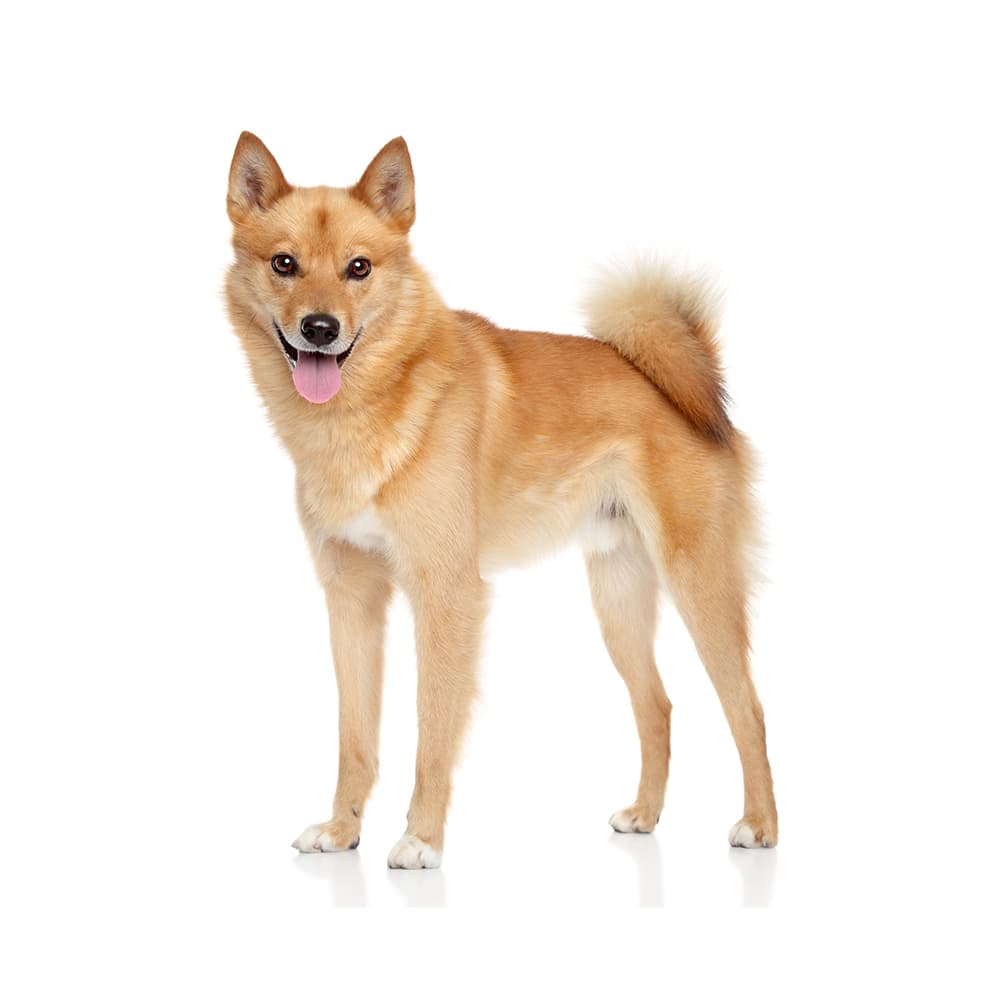Discover your dog's connection to this breed and 200+ others


Discover your dog's connection to this breed and 200+ others



The Finnish Spitz, or "Suomenpystykorva" as it is called in its native Finland, has a long history dating back several thousand years. This breed is believed to have descended from spitz-type dogs that accompanied early Finno-Ugric tribes on their migrations throughout Eurasia and into Scandinavia. They were used primarily as hunting dogs, and they became particularly skilled at hunting game birds, earning the nickname "the barking bird dog." In the 1920s the first exported Finnish Spitz made it to England, and the first Finkie made it to America around 1960. Finnish Spitz dogs are an integral part of Finnish culture, and they were declared the national dog of Finland in 1979.
Finnish Spitz Dogs may suffer from atresia ani, cataracts, diabetes mellitus, epilepsy, hip dysplasia, immune-mediated hemolytic anemia, lupus erythematosus, patellar luxation pemphigus foliaceus, pituitary dwarfism, shaker syndrome, signal transduction disorder, and thrombopathia. Genetic testing is recommended, including for the following additional conditions: hyperuricosoria, degenerative myelopathy, and progressive rod-cone degeneration.
The Finnish Spitz is known to be lively, playful, and friendly. They make excellent family pets and can get along well with children and other dogs if properly socialized. Despite their friendly nature, they can be aloof or reserved with strangers, a trait common in many spitz breeds. Finnish Spitz dogs are highly intelligent and independent, which can sometimes translate into stubbornness.
They are known for their unique "bark," which they used historically to alert hunters to the presence of game birds. This trait can be quite prominent, and prospective owners should be prepared for a dog that likes to "talk".
A canine genetic lineage is a group of individuals or entire breeds that descended from common ancestors predating modern breed formation. Often these lineages are associated with a ‘type’ of dog with a unique historical working role and associated behaviors (e.g., herding, scent hunting, etc.).
Spitz and Sled Dogs originate in the Arctic and subarctic regions which caused them the develop adaptations to cold climates. Some of these adaptations give rise to characteristics of the lineage, most notably a dense double coat that helps with insulation. The lineage of these dogs can be followed back to ancient breeds developed by Indigenous people. These ancient breeds were used as an aid for transportation, herding, guarding, and hunting. These jobs have created dogs that are independent, intelligent and have strong work ethics as well as a sturdy body that helps them to pull sleds or go on long journeys over rough terrain.
Example breeds with ancestry from this lineage include Akita, Chow Chow, and Siberian Husky.
The Finnish Spitz has a unique style of barking known as "yodeling" or "barking in series," which was used to indicate the type of game they found while hunting.They can achieve 160 barks a minute.
The Finnish Spitz is nicknamed "Finkie" by its enthusiasts. The term was originally coined by Lady Kitty Ritson in England.
In Finland, there is an annual contest to find the "King of the Barkers" among the Finnish Spitz breed.
Doi:10.1002/9781119540687 https://www.akc.org/dog-breeds/finnish-spitz/ https://www.petmd.com/dog/breeds/c_dg_finnish_spitz https://www.fci.be/Nomenclature/Standards/049g05-en.pdf https://www.ukcdogs.com/finnish-spitz
Recommended by top vets with decades of experience
21 breeds
64 genetic health markers
50 genetic trait markers
